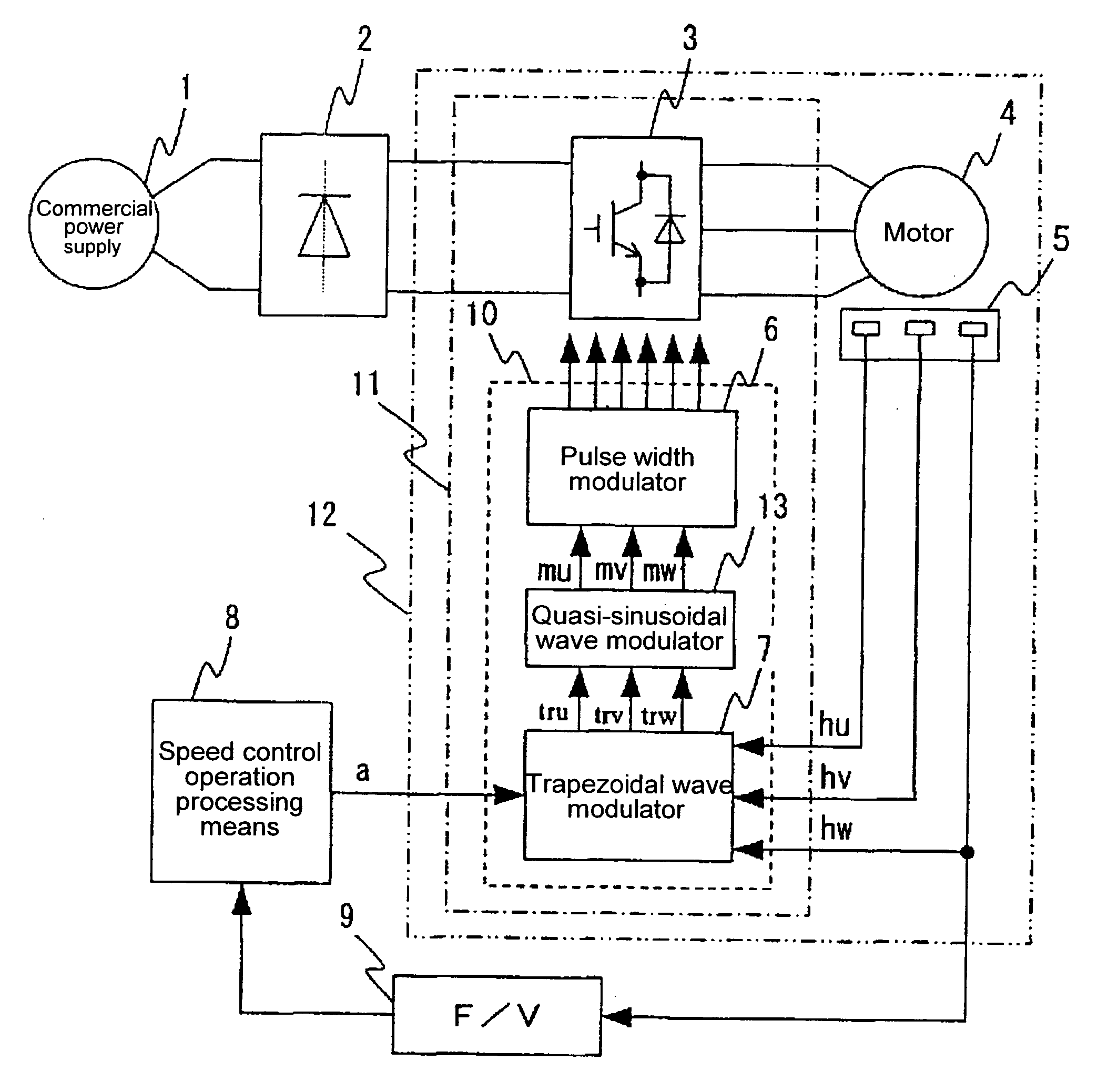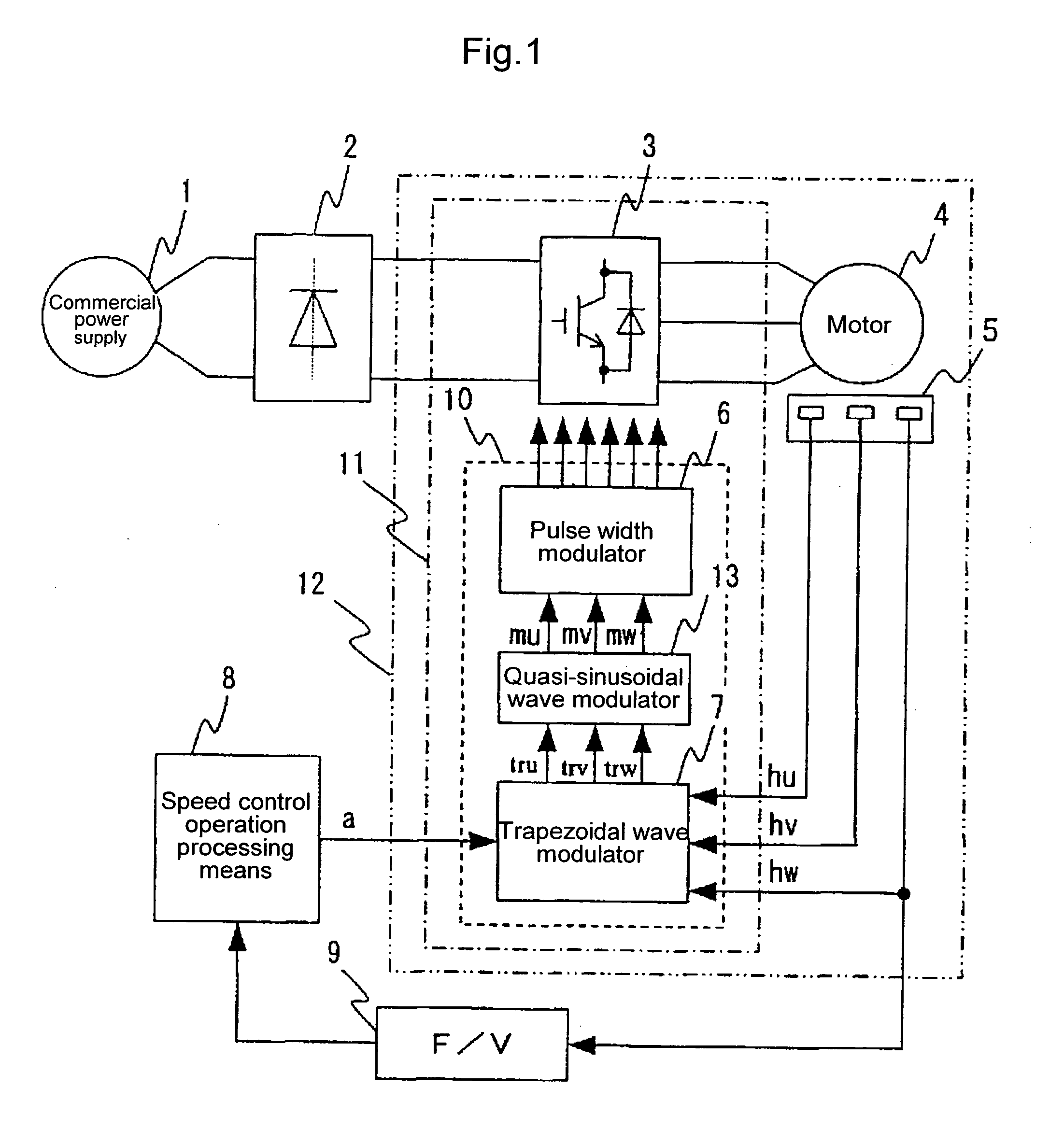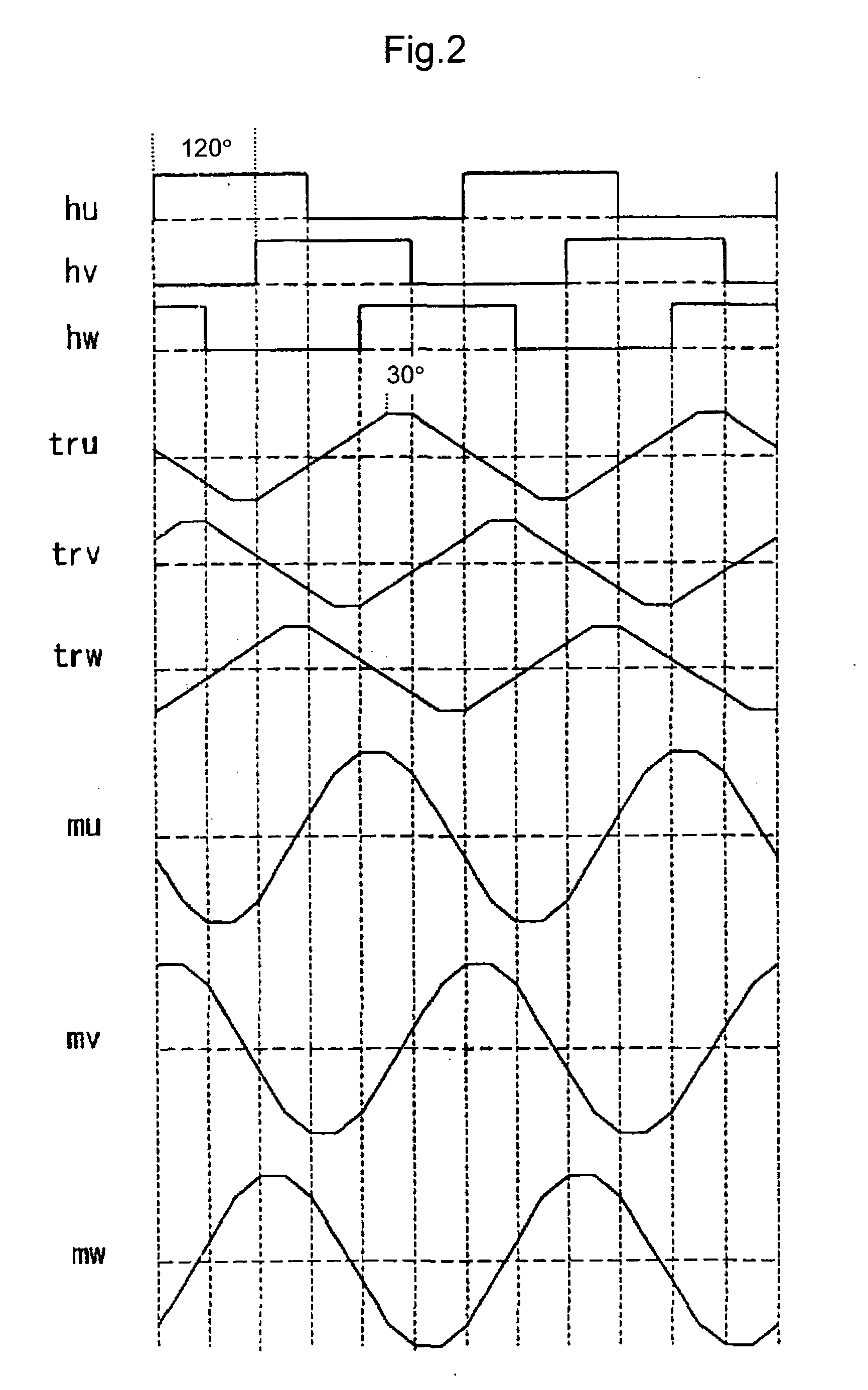Driving equipment and semiconductor equipment for alternating-current motor
a technology of driving equipment and semiconductor equipment, which is applied in the direction of motor/generator/converter stopper, electric motor speed/torque regulation, dynamo-electric converter control, etc., can solve the problems of motor torque generally tending to ripple, complex and expensive methods, and noise generation
- Summary
- Abstract
- Description
- Claims
- Application Information
AI Technical Summary
Benefits of technology
Problems solved by technology
Method used
Image
Examples
third embodiment
[0101] the present invention will be described using FIG. 13.
second embodiment
[0102] FIG. 13 shows the configuration of a trapezoidal wave modulator 7A together with its peripheral circuits according to this embodiment. A major difference from the embodiments described above is that the second modulation circuit is removed to reduce the size of the modulation circuit. Due to this, in this embodiment, the trapezoidal wave modulator 7A shown in the above second embodiment is used as it is, and arbitrary trapezoidal wave signals tru, trv, and trw outputted therefrom are directly inputted into a pulse width modulator 6 and are compared with a carrier wave, thereby generating PWM signals.
[0103] In general, a line voltage is applied to the winding of a motor, and thus even when the waveform energized to each phase is trapezoidal, a voltage having a quasi-sinusoidal wave generated by subtraction of trapezoidal waves between two phases is practically applied. When tru, trv, and trw are regarded as three phases of trapezoidal waves, their line voltages are represented...
fourth embodiment
[0120] FIG. 17 shows an operation waveform of the quasi-sinusoidal wave modulator 13B. tru, trv, and trw are trapezoidal waves each having a flat part of 30.degree. for three phases. When Kg2=-1 in the above expressions, 3.phi.=-(tru+trv+trw) becomes, as shown in the figure, a trapezoidal wave having a period 3 times as large as the trapezoidal wave having a flat part of 30.degree.. This is added to tru, trv, and trw thereby to obtain mu1, mv1, and mw1, respectively. Then, they become quasi-sinusoidal waves as shown in FIG. 17, which have a smaller amplitude and a longer flat part than each phase of a trapezoidal wave. These have the same waveform as the quasi-sinusoidal waves obtained in the
[0121] Further, when the values between these phases are taken, quasi-sinusoidal waves represented by mu1-mv1, mv1-mw1, and mw1-mu1 as shown in FIG. 17 are obtained, and they agree with the quasi-sinusoidal waves shown in FIG. 7. In this embodiment, in order to obtain the same quasi-sinusoidal w...
PUM
 Login to View More
Login to View More Abstract
Description
Claims
Application Information
 Login to View More
Login to View More - R&D
- Intellectual Property
- Life Sciences
- Materials
- Tech Scout
- Unparalleled Data Quality
- Higher Quality Content
- 60% Fewer Hallucinations
Browse by: Latest US Patents, China's latest patents, Technical Efficacy Thesaurus, Application Domain, Technology Topic, Popular Technical Reports.
© 2025 PatSnap. All rights reserved.Legal|Privacy policy|Modern Slavery Act Transparency Statement|Sitemap|About US| Contact US: help@patsnap.com



